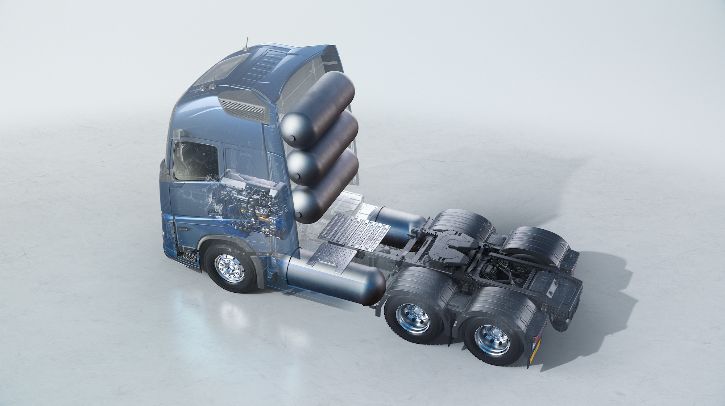The H2Accelerate collaboration, with the support of other industry leaders, has published a whitepaper outlining the role of hydrogen internal combustion engine vehicles (H2-ICEVs) in accelerating Europe’s zero-emission vehicle deployment.
The report states that H2-ICEVs can help scale the rollout of hydrogen refueling infrastructure by driving early fuel demand, while providing a long-term zero-emission solution for very heavy load road and off-road applications, all while building on Europe’s existing knowledge and manufacturing base. To leverage the opportunity of H2-ICEVs, Europe must provide the right support to enable large-scale adoption of these vehicles before the end of the decade.
The potential of H₂-ICEVs
The white paper discusses how H₂-ICEVs are emerging as a component of Europe’s zero-emission mobility strategy. H₂-ICEVs can now qualify as zero-emission vehicles under the updated Heavy-Duty Vehicles CO₂ standards, published in May 2024. As such, these vehicles present an opportunity to accelerate the deployment of zero-emission transportation solutions before the end of the decade.
Drawing on decades of expertise with conventional internal combustion engines, the automotive sector can repurpose existing manufacturing capacity, supply chains and engineering expertise to scale H2-ICEV deployment. As a result, H₂-ICEVs can achieve scaled deployment by the end of the decade and are projected to be the least upfront capital-intensive zero-emission technology until battery electric (BEV) and fuel cell electric vehicle (FCEV) markets reach higher maturity.
Beyond serving as a transition technology toward FCEVs, H₂-ICEVs are also emerging as a competitive zero-emission solution for particularly high-load applications across a range of distances, including non-road mobile machinery (NRMM).
Furthermore, if deployed at scale, H₂-ICEVs can drive early offtake for the AFIR-mandated pan-European hydrogen refueling station (HRS) network, providing confidence to HRS developers that sufficient demand for hydrogen fuel exists and unlocking scaled investments in this infrastructure. H2-ICEVs have the capacity to deliver immediate carbon reduction benefits while supporting the wider adoption of hydrogen as a transportation fuel, paving the way for future FCEV uptake.
Recommendations to European policymakers
However, despite meeting the definition of zero-emission vehicle, H₂-ICEVs are not yet classified equally with other zero-emission technologies across Europe. H2-ICEVs have been excluded from incentivizing mechanisms and, in some member states, remain unable to refuel from existing HRS infrastructure due to existing energy taxation legislation.
The paper calls on European policymakers to unlock the full potential of H₂-ICEVs and accelerate decarbonization. In the report, it urges EU policymakers to classify hydrogen internal combustion engine vehicles (H₂-ICEVs) as zero-emission across all member states and to ensure equal treatment with fuel cell vehicles (FCEVs). This includes aligning taxation exemptions, shared refueling infrastructure and eligibility in zero-emission deployment projects, as well as equal recognition under RED II/III. It also calls for continued funding of hydrogen engine research through programs like Horizon Europe, emphasizing H₂-ICEVs as a cost-effective, scalable path to decarbonizing heavy-duty transport while leveraging Europe’s existing automotive industry.
Hannah Bryson-Jones, spokesperson for the H2Accelerate collaboration, said, “Hydrogen internal combustion engines are emerging as a key component of Europe’s zero-emission mobility strategy. This technology can be deployed rapidly, at scale, and at a cost-competitive price with diesel equivalents, while supporting the growth of a pan-European hydrogen refueling network this decade. With a level policy playing field, H₂-ICEVs can accelerate the decarbonization of heavy-duty transport and support a widespread hydrogen refueling network.”
In related news, BMW launches demo fleet run on vegetable oil and calls for sustainability-led action


